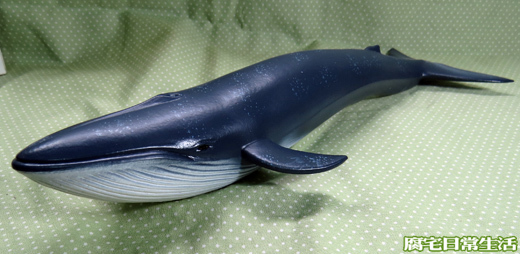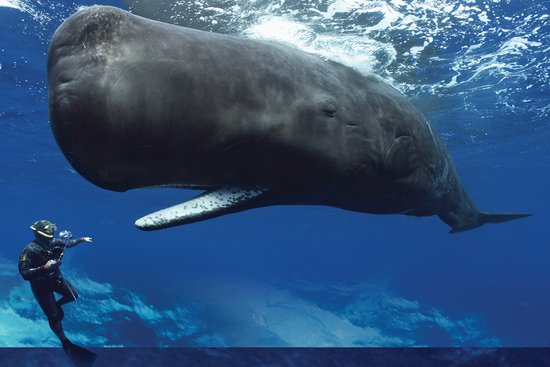


鲸是海洋哺乳動物中鲸目生物的俗名,又分為齒鯨類(Odontoceti)和鬚鯨類(Mystacoceti)鲸目之下包括有海豚科。但在日常语言中,人们将鲸和海豚分开。鲸往往被俗称为鲸鱼,但实际上鲸并不是一种鱼。海豚科屬於鲸目下的齒鯨亞目,該亞目中有抹香鯨及白鯨等。而以鯨鬚替代牙齒,利用鲸须過濾水中浮游生物進食的鬚鯨亞目,有座頭鯨及現存地球上最大的動物藍鯨等。
數世紀以來,鯨經常被作為桌上佳餚或是工業產品的原料。然而,到了20世紀中葉,鯨的數量已經因為捕鯨工業的盛行而銳減,成為了瀕臨絕種的生物。所幸現階段大多數國家都已經在八零年代簽下全球禁捕令,停止捕鯨工業的持續發展。
Whales are a widely distributed and diverse group of fully aquatic marine mammals. They comprise the extant families Cetotheriidae (whose only living member is the pygmy right whale), Balaenopteridae (the rorquals), Balaenidae (right whales), Eschrichtiidae (the gray whale), Monodontidae (belugas and narwhals), Physeteridae (the sperm whale), Kogiidae (the dwarf and pygmy sperm whale), and Ziphiidae (the beaked whales).[1][2][3] There are 40 extant species of whales. The two suborders of whales, Mysticeti and Odontoceti, are thought to have split up around 34 million years ago.[4] Whales belong to the clade Cetartiodactyla and their closest living relative is the hippo having diverged about 40 million years ago.[5]
Whales range in size from the 2.6 metres (8.5 ft) and 135 kilograms (298 lb) dwarf sperm whale to the 34 metres (112 ft) and 190 metric tons (210 short tons) blue whale, which is also the largest creature on earth. Several species exhibit sexual dimorphism, in that the females are larger than males. They have streamlined bodies and two limbs that are modified into flippers. Though not as flexible or agile as seals, whales can go at incredibly fast speeds, up to 20 knots. Balaenopterids (rorquals) use their throat pleats to expand their mouth to take in huge gulps of water.[6] Balaenids have huge heads that can make up 40% of their body mass to take in huge amounts of water.[7] Odontocetes have conical teeth designed for catching fish or squid. Mysticetes have a well developed sense of "smell", whereas Odontocetes have well-developed senses—their hearing that is adapted for both air and water, and can survive even if they're blind. Some species are well adapted for diving to great depths. They have a layer of fat, or blubber, under the skin to keep warm in the cold water.
Although whales are widespread, most species prefer the colder waters of the Northern and Southern Hemispheres, and migrate to the equator to give birth. Odontocetes feed largely on fish and squid; but a few, like the sperm whale, feed on large invertebrates, such as giant squid.[8] Grey whales are specialized for feeding on bottom-dwelling mollusks.[9] Male whales typically mate with multiple female every year, but females only mate every two to three years.[10] Calves are typically born in the spring and summer months and females bear all the responsibility for raising them. Mothers of some species fast and nurse their young for a relatively long period of time. Whales produce a number of vocalizations, notably the songs of the humpback whale.[1]
The meat, blubber and baleen of whales have traditionally been used by indigenous peoples of the Arctic. Whales have been depicted in various cultures worldwide, notably, the Inuit and the coastal peoples of Vietnam and Ghana; they sometimes hold whale funerals.[11] Small whales, such as belugas, are commonly kept in captivity and are even sometimes trained to perform tricks. Once relentlessly hunted by commercial industries for their products, whales are now protected by international law. The North atlantic right whales have become nearly extinct in the past century with a population of 450, and the north pacific grey whale population is ranked Critically Endangered by the IUCN.[12] Besides whaling, they also face threats from bycatch and marine pollution (anything from trash bags to oil contamination).[1][13]
No comments:
Post a Comment